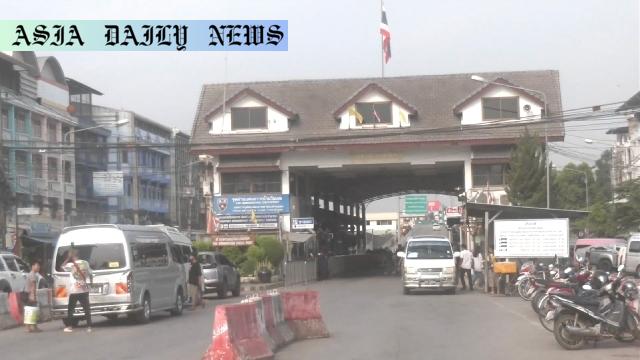Human Trafficking: Authorities in Thailand rescue a Japanese teen after discovering his forced involvement in Myanmar scams.
- Human trafficking case where a Japanese teenager was rescued in Thailand.
- Thai authorities located the victim following reports from Japan.
- Believed to have been forced into scams under intimidation in Myanmar.
- A previous case involved a 17-year-old Japanese teen with similar experiences.
- Reveals broader trends of victims from various nationalities.

Introduction: The Rescue of a Young Victim
Human trafficking remains one of the most heinous crimes of the modern world, targeting vulnerable individuals and compelling them into exploitation. Recently, Thai authorities made a significant breakthrough by rescuing a 16-year-old Japanese boy from the clutches of a scam center in Myanmar. The incident sheds light on the growing prevalence of cross-border exploitation and the urgent need for actionable solutions to combat it.
Details of the Rescue Operation
The teenager was taken into protective custody earlier this month in Mae Sot, a western Thai city near the border. Following intensified efforts initiated by Japanese authorities, Thai police discovered him amidst an environment of coercion and possible violence within Myanmar’s scam hubs. The boy’s captivity and forced participation in criminal activities reflect the cruel tactics often used in human trafficking schemes.
A Broader Trend of Exploitation
This case is not isolated. Thai police had encountered a similar situation back in January when a 17-year-old Japanese high school student was removed from another scam operation in Myanmar. These accounts highlight a troubling pattern of exploitation and manipulation targeting individuals from myriad nationalities, lured or coerced through deceptive means.
The Role of International Cooperation
The successful rescue operation underscores the critical importance of cross-border collaboration. In this case, Thailand acted upon requests from Japan and took decisive measures. Such coordination not only aids in locating victims but also sets an important precedent for future operations. Governments, agencies, and non-profits must work in tandem to dismantle trafficking networks systematically.
Behind the Scam Centers: How They Operate
Myanmar’s scam hubs have gained notoriety for harboring foreign nationals coerced into fraudulent schemes under severe conditions. These operations often function in isolated areas, making them difficult to detect. Victims are subjected to intimidation, physical harm, and psychological control, rendering escape nearly impossible. Understanding the mechanisms of these hubs can aid authorities in identifying and dismantling them.
The Psychological Toll on Victims
Forced participation in illegal activities and prolonged captivity can have devastating effects on a victim’s mental health. Survivors often grapple with feelings of fear, guilt, and helplessness that require long-term rehabilitation. As seen in this case, even teenagers are not spared from the emotional scars of such experiences, making it imperative to provide comprehensive support post-rescue.
The Need for Stringent Measures
Eliminating human trafficking entirely necessitates robust preventative measures. Governments must intensify border security, implement stricter monitoring of employment offers, and raise public awareness about various trafficking schemes. Furthermore, international bodies should impose stricter sanctions against countries that harbor or enable such operations.
Conclusion: A Wakeup Call
The rescue of the 16-year-old Japanese boy is a bittersweet moment—while his freedom from unbearable circumstances is commendable, it is a stark reminder of the pervasive nature of human trafficking. The situation demands a renewed global commitment to eradicating this menace. By focusing on preventative strategies, victim rehabilitation, and international synergy, significant progress can be achieved toward a safer future for all.



Commentary
A Saddening Reflection on Human Exploitation
The rescue of a 16-year-old Japanese boy from a scam center in Myanmar is both a relief and a wakeup call. While the authorities’ swift action in ensuring his safety is praiseworthy, the existence of such exploitative operations reveals an underbelly of global issues that humanity must confront.
The Courage of Victims Amidst Adversity
It is difficult to fathom the emotional and physical endurance required of victims who find themselves trapped in such dire circumstances. The boy’s experience is a painful reminder of the countless nameless individuals who remain captive, enduring intimidation, and violence. We need to hear their stories, amplify their voices, and act decisively on their behalf.
The Role of Awareness and Advocacy
This case emphasizes the essential role of public awareness and international advocacy. Without knowledge of these atrocities, it becomes harder for collective action to take root. Governments, citizens, and non-profits must join forces to ensure that trafficking networks are not allowed to thrive. Advocacy initiates accountability, a step critical for corrective measures.
Moving Toward Hope and Solutions
Rescuing just one life can be a profound act of hope amidst despair. However, systemic changes are essential for long-term solutions. Thailand’s collaborative effort with Japan offers a model for future initiatives. Through earnest international cooperation and consistent efforts, there is potential to erode the foundations of such exploitative networks and ensure a world where no one’s freedom is stolen.